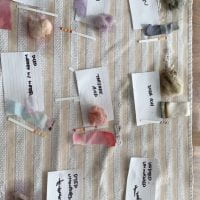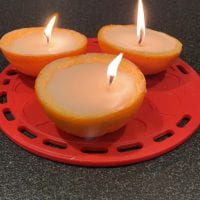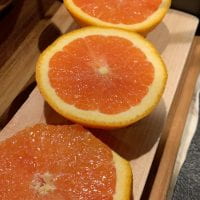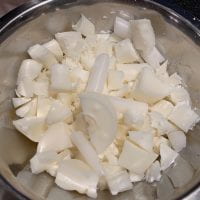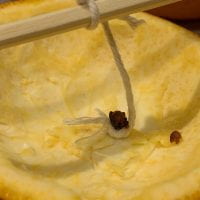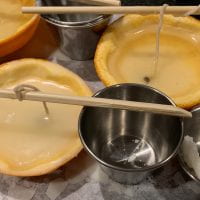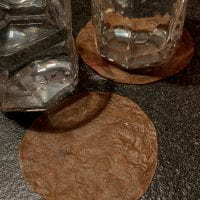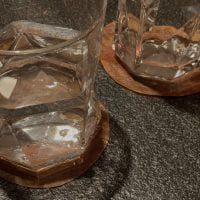This semester was centered around understanding the life-cycles of objects that we use everyday and viewing these cycles in terms of their micro and macro impacts on environmental, cultural, political, and societal sectors. Furthering our understanding of the different life-cycles of objects and the materials that they are made with, we conducted two experiments that required the employment of our newfound knowledge from readings like “Material Diversity” or the Okala design wheel – that contributed to our working expansion of sustainable materials and design.
The first experiment was to ‘grow’ Kombucha leather using tea and scoby – an ingredient used in the fermentation and production of Kombucha. After a few weeks of letting the scoby grow and form a hard, leather-like material on the surface of the brewed tea, it was taken out and set out to dry, causing it to loose all the moisture and shrink. The sustainable ‘leather’ material were then turned into coasters as I found that the leather was very resilient and protective material that was able to withstand both hot and cold temperatures.
The second experiment was to create a ‘natural-dye’ and testing the effects of using natural produce and vegetation with a variety of mordants. I selected purple carrots that were organically grown in California to make my dye from. The experiment emphasized the understanding that water is a solvent and acts as a carrier of the pigments in liquid form. Using water as a main component of the cycle, it is a great carrier of ‘materials’ as a solvent as it was able to move the extracted pigment from the plant and into the fiber sample. The chemicals used to produce colors other than the original extracted dye are able to be treated and processed in sewage treatment plants and do not pose any immediate threats to the main water systems. The process of using natural dyes as a environmentally aware alternative in the fashion industry is an idea that I would definitely like to explore further, testing different plants with different mordants and seeing if they can be manipulated to create patterns or imagery on a variety of other synthetic and natural fibers.
The
